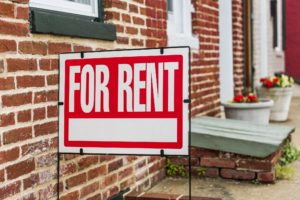 Single-family rents have been climbing steadily since 2010, but the latest edition of the CoreLogic Single-Family Rental Index (SFRI) also shows year-over-year (YOY) rent growth also continuing to decelerate in February 2018. That slow deceleration has been the norm since single-family rents peaked at 4.2 percent in February 2016.
Single-family rents have been climbing steadily since 2010, but the latest edition of the CoreLogic Single-Family Rental Index (SFRI) also shows year-over-year (YOY) rent growth also continuing to decelerate in February 2018. That slow deceleration has been the norm since single-family rents peaked at 4.2 percent in February 2016.
"Single-family rents continued to increase in February, but the rate of increase slowed from a year ago, particularly for low-end rentals," said Molly Boesel, Principal Economist for CoreLogic. "The slowdown in growth may signal that rents are beginning to stabilize on the low end.”
According to CoreLogic’s SFRI, which “analyzes single-family rent price changes nationally and among 20 metropolitan areas,” national rents increased 2.8 percent in February 2018, compared to an increase of 2.5 percent in February 2017. “Low rental home inventory, relative to demand, fuels the growth of single-family rent prices,” CoreLogic reported.
CoreLogic’s SFRI reports that high-end rentals (defined as properties with rent prices greater than 125 percent of a region’s median rent) increased 2.4 percent year-over-year, up from a gain of 1.4 percent in February 2017. On the low-price end of the spectrum (properties with rent prices less than 75 percent of the regional median), rent prices increased by 3.7 percent in February 2018, down from a gain of 4.5 percent in February 2017.
Which of the top 20 metros featured the highest year-over-year rent growth for February? That would be Sin City—Las Vegas, Nevada—where single-family rents increased by 5.3 percent YOY. Next in line was Orlando, Florida, which featured a YAY SFR rent growth of 4.8 percent and then Phoenix, Arizona at 4.4 percent.
Both Orlando and Phoenix benefited from employment growth during that period as well, featuring growth rates of 3.7 percent and 3.1 percent YOY, respectively. The national employment growth average was 1.4 percent, according to data from the United States Bureau of Labor Statistics.
Honolulu, Hawaii, was the only metro to see a YOY decrease in rent prices, dropping by 0.5 percent since February 2017 and continuing a downward trend the metro has experienced for three months straight.
CoreLogic also noted rent price increases in the Houston metro, which is still recovering from last year’s damaging hurricane season. Houston experienced 2.7 percent rent growth YOY in February, compared to 1.2 percent in October 2017.

 DSNews The homepage of the servicing industry
DSNews The homepage of the servicing industry









